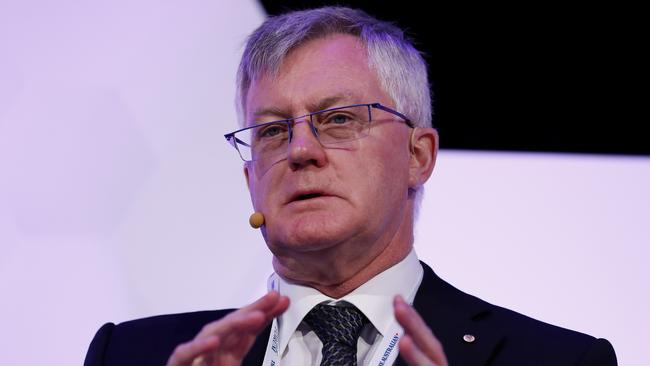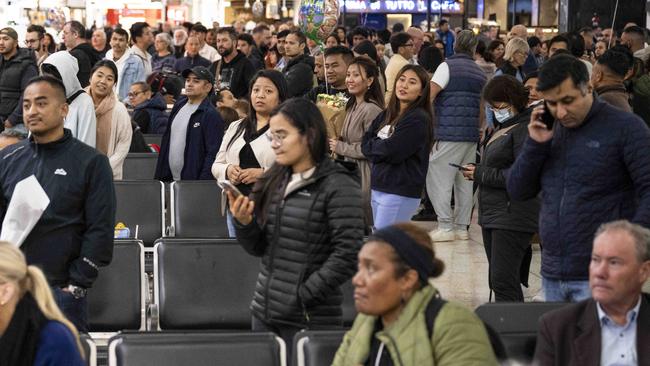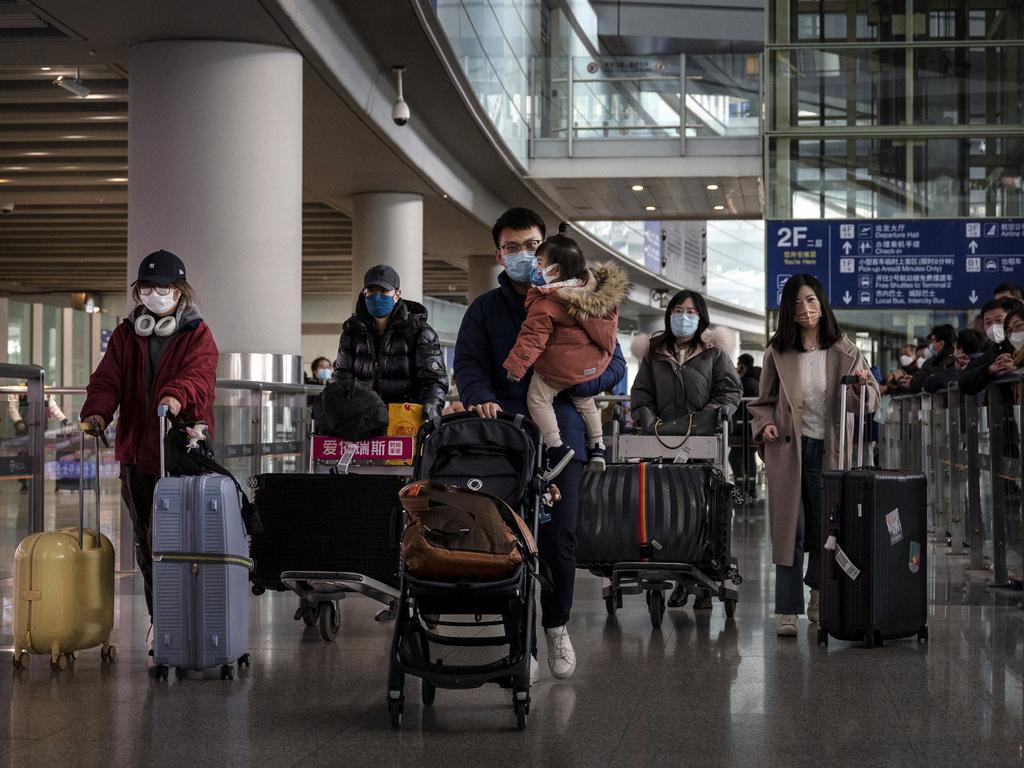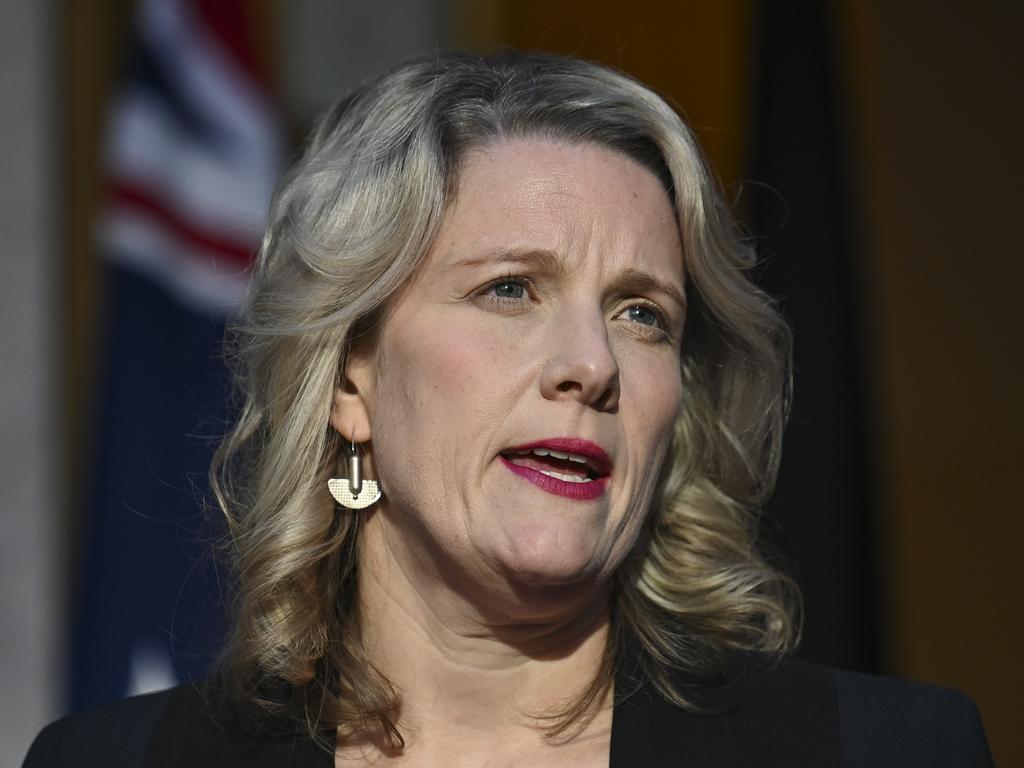Labor’s migration plan will focus on permanent settlers
Labor aims to attract the best skilled workers to raise productivity — and crack down on rorts in the migration system

The Albanese government will target top foreign-born talent for the long haul in its upcoming migration strategy, as a new OECD study shows skilled migrants boost the productivity of local workers.
Home Affairs Minister Clare O’Neil’s response to the expert panel’s migration review delivered in March, due within weeks, is also expected to tighten entry for temporary migrants who have surged into the country after borders were reopened to foreigners in November 2021.
There are 331,000 more international students and foreign workers here than the pre-pandemic high of September 2019, leading to world-leading population growth that is putting pressure on housing supply and consumer inflation.
New figures from the Department of Home Affairs show that in the two years to the end of last month, the number of temporary visa holders in Australia with work rights – including students, graduates, working holiday-makers, skilled and unskilled workers, and New Zealand citizens – has risen 692,500.

At the start of this month, there were almost 2.3 million people on temporary visas with work rights, or about one in six of the nation’s entire labour force of 14.6 million.
In the past financial year, the stock of people on temporary visas (not including visitors and aircrew) rose 424,000, more than twice the number of enduring settlers.
Looming restrictions on demand-driven temporary entry, as Canberra addresses visa integrity issues and rejects more student applications, will lead to a fall in migrant inflows in coming years, a senior government source told The Australian.
In recent days, Home Affairs published the final outcome for the permanent migration program in 2022-23, with 73 per cent of the 195,000 places filled in the skilled stream, a reversal from the previous two years when migration dried up due to the pandemic and the family stream raised its share of places.
In 2022-21, when the permanent program welcomed 160,000 people, only half were in the skilled stream.
The federal government announced in May that the planning level for the 2023–24 permanent program would be set at 190,000 places, with 72 per cent designated for the skilled stream.
As the expert panel found, while Australia mainly relies on the annual permanent migration cap to manage migrant numbers, it “is a poor tool for driving predictability of overall migration flows”.
Canberra’s former top bureaucrat Martin Parkinson, who led the migration review, said government needed to consider the optimal size and composition of migrant intakes, temporary and permanent, over the medium to long term in the best interests of Australia.
“What we’ve done, without ever setting out to do it – and I’m sure if the Australian public had been asked they would not have agreed to it – is we’ve created a guest worker program, with a permanent underclass of people who are temporary migrants,” Dr Parkinson told The Australian.
“They have no pathways to permanency, they have no idea what their status is, but we also don’t force them to leave.”

Dr Parkinson and review panel member and University of Adelaide law professor Joanna Howe will speak at The Australian-Melbourne Institute Economic and Social Outlook Conference in Melbourne on Thursday in a session about migration.
Forthcoming OECD research shows Australian-born workers with less than tertiary education benefit slightly more from migration compared with their counterparts with degrees.
This diverges from findings for other OECD countries “and may reflect the comparatively high skilled nature of Australian migrants with skills that are complementary to those of lower skilled natives”.
“Additionally, the skill levels of migrants themselves have an impact on the productivity of native labour, with a 10 per cent increase in the proportion of high-skilled migrants within the migrant population associated with a 3.3 per cent increase in native labour productivity,” the OECD said of the research.
In its survey, published on Friday, the OECD said “immigration will continue to play a key role in the labour market”.
“However, the composition of the skilled migrant intake needs to be more responsive to changes in the skill needs of industry, including through better use of timely and granular data, analysis and the views of employers,” it said, in line with the Parkinson review.”

The OECD noted the employment rate of those in Australia who were born overseas has been below that of the Australian-born population, reflecting the very low labour force participation rate of migrant women, rather than higher unemployment rates.
The gap in employment between Australian-born women and migrant women is about 8 percentage points, which the expert panel identified as an area for attention.
“While most migrants do well, there is considerable lost potential and more that can be done, particularly to support migrant women, through settlement and other government services and support, access to networks and local experience, and a more co-ordinated approach to skills recognition,” the migration panel said.
At the Jobs and Skills Summit in September last year, the federal government raised the permanent migration planning level from 160,000 to 195,000 places, to ease workforce and skill shortages and support economic recovery from the pandemic.
Home Affairs recruited extra staff and improved systems to cope with the post-pandemic surge in demand for temporary and permanent visas and to clear a processing backlog.
In its report on the migration program, the department said “healthy pipelines and strong lodgement rates also supported delivery of the 2022-23 permanent migration program across streams, with increased demand for skilled migration in particular”.







To join the conversation, please log in. Don't have an account? Register
Join the conversation, you are commenting as Logout